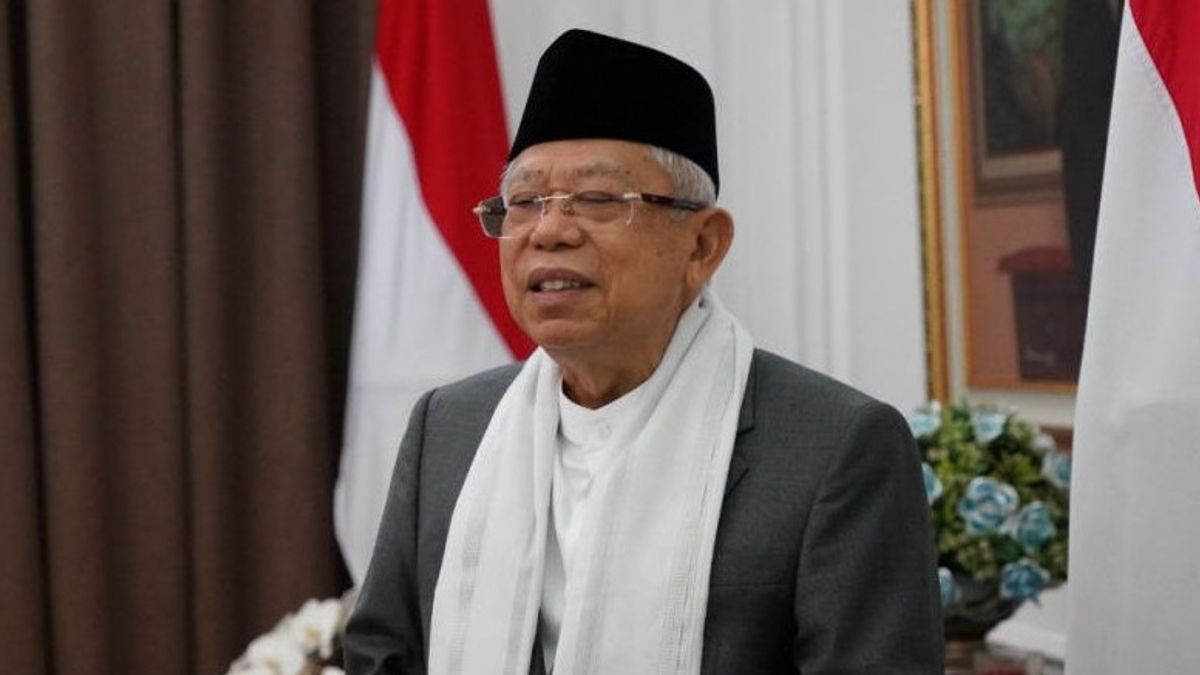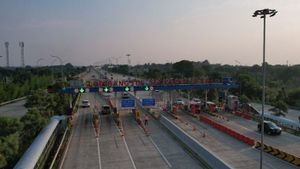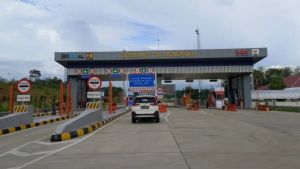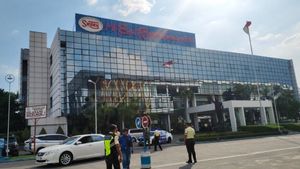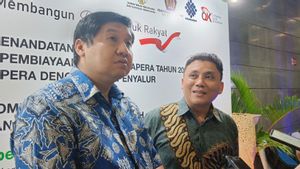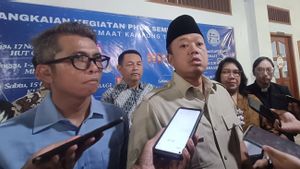JAKARTA - Vice President Ma'ruf Amin said the oil palm industry and plantations have a strategic role in economic development. Because, Indonesia is the largest palm oil producer in the world by controlling 55 percent of global exports. Meanwhile, based on 2019 BPS data, 41.35 percent of oil palm plantations in the country are controlled by smallholder plantations.
Furthermore, Ma'ruf said the government realized the importance of paying special attention to smallholder plantations, especially to further improve the welfare of farmers. To increase added value and improve farmers' welfare, said Ma'ruf, there are at least three clusters that need to be managed properly.
First, said Ma'ruf, strengthening the upstream sector, which is carried out through breeding and management during the planting period, increasing the productivity of smallholder oil palms, as well as intercropping and integration with livestock or what is known as integrated agriculture.
"Second, strengthening the downstream industry. This is done through strengthening capital, developing and managing post-harvest palm production, downstreaming or developing and processing derivative products with high added value, marketing development and strengthening the palm oil market, as well as maintaining CPO prices," he said at the event. The First Harvest of Palm Oil for the People's Palm Rejuvenation Program, Thursday, September 2.
The last is improving the quality of human resources (HR) through coaching, training, internships, comparative studies, and consultations. Furthermore, business management and mastery of technology to improve production systems and quality control. Including the development of product design and engineering, increasing the efficiency of the use of raw materials, as well as the use of technology for marketing.
"In order to increase added value, smallholder plantations must start entering the downstream industry to increase income and wider business development opportunities," he said.
Furthermore, Ma'ruf said, one of the government's efforts to increase the productivity of people's palm oil plantations, which is still relatively low, is by presenting the People's Palm Oil Rejuvenation (PSR) program. This is because the productivity of people's oil palm plantations is still relatively low, only 3.7 tons per hectare per year. In fact, the potential that can be produced can reach eight tons per hectare, per year.
- https://voi.id/berita/79010/wapres-ma-ruf-amin-harus-tahu-level-kepuasan- Masyarakat- Atas-kinerjanya-di- Bawah-50-percent
- https://voi.id/berita/80850/message-wapres-saat-lpsk-berusia-13-tahun-harus-tetap-melayani-dengan-prima
- https://voi.id/berita/79052/akhir-2021-wapres-ma-ruf-sebut-government-target-selesaikan-kemiskinan-ekstrem-di-7-provinsi-in
- https://voi.id/berita/80420/wapres-ma-ruf-amin-panggil-mendagri-tito-karnavian-bahas-pp-uu-otsus-papua
- https://voi.id/berita/78193/wapres-ma-ruf-amin-minta-pemda-re-do-peetaan-program-percepatan-penurunan-stunting
[/see_also
Ma'ruf said that in 2021 the People's Palm Oil Replanting program is targeted to target a land area of 180,000 hectares with an allocation of Rp 5.567 trillion. The target for oil palm rejuvenation is until 2022 on an area of 540,000 hectares.
To achieve this target, said Ma'ruf, the government and all stakeholders of the palm oil industry need to unite, work together, and collaborate.
"Close cooperation is needed by three parties in the context of sustainable palm oil management, namely the government, the private sector and the community," he said.
Ma'ruf said, currently independent smallholders are the main actors in the oil palm plantation sector. Independent smallholders control almost half of Indonesia's oil palm plantations. Therefore, the government considers it important to give special attention to smallholder plantations, especially to further improve the welfare of farmers.
For your information, based on data from the Central Statistics Agency (BPS) in 2019, from around 14.6 million hectares of oil palm plantations, it is estimated that 6.04 million hectares or 41.35 percent are controlled by smallholder plantations with palm oil production of 16.2 million. tons or 34 percent.
The English, Chinese, Japanese, Arabic, and French versions are automatically generated by the AI. So there may still be inaccuracies in translating, please always see Indonesian as our main language. (system supported by DigitalSiber.id)
